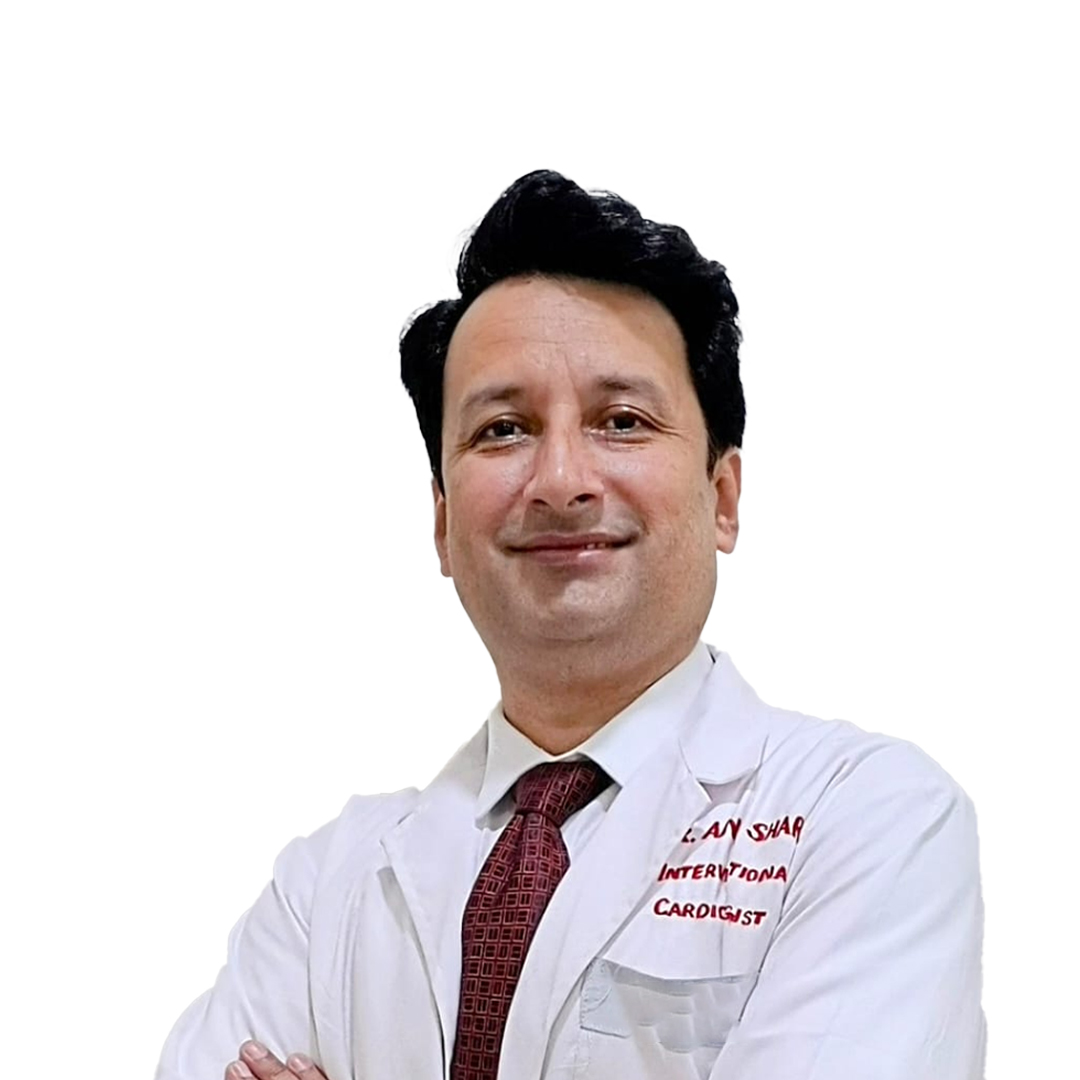Heart Transplant Surgery - Procedure, Risks & Life Expectancy

Treatment Duration
8 Hours
------ To ------11 Hours
Treatment Cost
₹ 18,00,000
------ To ------₹ 25,00,000

A Heart Transplant is a transplant surgery that replaces your damaged or failing heart with a healthy donor heart. Like any other organ transplant surgery, a heart transplant is a major surgery that has risks. You may receive a heart transplant only if your condition hasn’t improved with medications and other surgeries. After receiving a heart transplant, your chances of survival are good only with appropriate follow-up care for the rest of your life.
| Surgery Name | Heart Transplant |
| Alternative Name | Cardiac Transplant |
| Conditions Treated | End-stage Heart Failure |
| Benefits of Surgery |
Healthy Life with a new Heart, Free from symptoms of heart failure, Fewer rehospitalisations, Enhanced quality of life, Longer survival rates |
| Treated By | Cardiac Surgeon, Cardiologist |
You can check Heart Transplant Cost here.
Who Needs a Heart Transplant?
A heart transplant is performed for patients who have:
- End-stage heart disease not responding to other medical or surgical therapy
- Nonischemic cardiomyopathy
- Ischemic cardiomyopathy
- Valvular heart disease
- Retransplantation
- Recurrent life-threatening ventricular arrhythmia, despite other treatments such as an ICD
- Recurrent unstable angina
Heart Transplant Videos by HexaHealth
Expert Doctors (10)
NABH Accredited Hospitals (10)


How is Heart Transplant Performed?
A heart transplant is a complicated procedure that commonly involves the following steps:
- Administrating general anaesthesia
- Heart transplants are always performed under general anaesthesia to put you into a deep sleep.
- Once you are asleep, the team will insert a breathing tube down your throat and attach the other end of the tube to a machine called a ventilator. The ventilator will keep you breathing during the surgery.
- Making an incision and removing the heart
- The surgeon will then make a cut or incision in your chest from below Adam’s apple to just above the navel. He/she will cut your sternum (breastbone) in half, separate the two halves, and spread them apart to reach your heart.
- Next, the surgeon will put tubes into your chest to pump blood through your body via a heart-lung bypass machine (cardiopulmonary bypass) while the heart is replaced.
- The machine adds oxygen to your blood, removes carbon dioxide, and keeps the blood circulating.
- Once the blood has been bypassed to the machine and starts being pumped by the machine, the surgeon removes your diseased heart.
- Implanting the donor’s heart
- When the surgeon removes your diseased heart, the team prepares the donor’s heart. After the donor’s heart is ready, the surgeon sews the heart into place.
- Once the heart is in place, the surgeon will connect the blood vessels and restart your new heart. The blood in the bypass machine is allowed back into the heart, and the surgeon removes the tubes from the machine.
- He/she will then shock the heart to restart the heartbeat.
- Rejoining the sternum and sewing the skin
- Your surgeon may put wires inside your heart and attach the other end to a pacemaker outside the body to help beat your new heart. He/she will then rejoin the sternum and use small wires to sew it together.
- Next, the surgeon will sew the skin over the sternum and use sutures or staples to close the incision. He/she will put tubes in your chest to drain blood and other fluids around the heart.
- Finally, your surgeon will apply a sterile bandage or dressing to the wound.
What Can You Expect Before and on the day of the Procedure??
Since people needing a heart transplant are more than the availability of heart donors, you have to undergo a strict selection process to receive a donor’s heart. The evaluation for the transplant process includes:
Medical Evaluation
To check if you have the best chance of survival, your healthcare provider will perform some diagnostic tests to examine your lungs and overall health. These tests may include imaging tests such as X-rays, CT scans, MRI, ultrasound, and more. The doctor may also evaluate the function of your heart, circulatory and respiratory systems by performing tests such as:
- Electrocardiogram
- Pulmonary function testing
- Exercise stress testing
- Heart catheterization
- Holter monitor
- Psychological and Social Evaluation
These evaluations check psychological and social issues involved in heart transplants, such as financial issues, stress, depression, and family support. These factors can largely affect your body’s response to the transplant after surgery.
Dental Evaluation
Oral health has significant importance in the health of your heart. Oral infections resulting from cavities or respiratory infections can spread to your heart and cause damage.
What Can You Expect on the Day of the Surgery?
- Your doctor will ask you not to eat or drink anything as soon as you are informed about the availability of a heart.
- He/she will explain the heart transplant procedure and allow you to ask your questions regarding the same.
- The team will ask you to sign a consent form giving your permission for the procedure.
- You will need to change into a gown and remove all jewellery pieces.
- If there is excess hair on your chest, someone from the nursing staff will shave it.
- The doctor will record your last meal and may give you a sedative to relax.
- After monitoring your vitals, the team will shift you to the OT room.
What Can You Expect During the Surgery?
- In the OT room, you will be made to relax on the operating table.
- The team will start an intravenous line in your arms or hands for medicines or IV fluids. They will place additional catheters in the blood vessels of your neck or wrists to monitor your heart and blood pressure.
- A foley catheter will be inserted in your bladder to drain urine, and a tube will be passed through your nose or mouth into your stomach to drain stomach fluids.
- The anaesthesiologist will give you general anaesthesia.
- Once you are asleep, the team will insert a breathing tube into your lungs.
- Throughout the surgery, he/she will monitor your vitals, like blood pressure, heart rate, and oxygen levels.
- The surgical site (skin over your chest) will be cleaned with an antiseptic solution.
- The surgeon will make an incision in your chest, perform the surgery, and replace your diseased heart with a donor’s heart.
- He/she will rejoin your sternum and close the incision with stitches or staples.
- Tubes will be used to drain the blood and other fluids around the heart.
- Finally, the surgeon will apply a sterile bandage to the wound.
- The duration of the procedure depends on the complexity of the case. If you do not have a VAD, the procedure may take three to four hours. If a VAD needs to be removed or you’ve had previous heart surgeries, the procedure may take as long as six to eight hours.
What Can You Expect After the Surgery?
In the Hospital
- After the surgery, the staff will take you to a recovery room or the intensive care unit (ICU), and the medical team will monitor your condition closely for several days.
- The nursing staff will connect you to machines that display your vitals, such as blood pressure, breathing rate, and oxygen level.
- Your provider will insert a tube in your throat connected to a ventilator to help you breathe until you are stable to breathe on your own. He/she will remove the breathing tube when you can completely breathe on your own (from a few hours after the surgery up to several days).
- Once the breathing tubes are out, the nurse will help you take deep breaths after every 2 hours.
- Your doctor may also give you pain medication if needed.
- Once your breathing and stomach tubes are removed, you may start drinking fluids.
- Physical therapists will begin your physical therapy and breathing exercises.
- When your doctor decides you are ready, the team will shift you from ICU to a private room.
- You will get discharged from the hospital after a stay of 10 to 14 days, or even longer.
- Before discharge, your provider will give you home care and follow-up instructions.
At Home
- The doctor will provide specific bathing instructions to keep the surgical area clean and dry.
- Do not drive until your provider seems fit.
- Follow your doctor’s instructions regarding medications, lifestyle, and follow-up appointments.
- Join cardiac rehabilitation programs to help you improve your health and recover after the transplant.
- To allow the transplanted heart to survive in your body, you’ll need to take medications for the rest of your life.
Follow-Up Appointments
- You will have several follow-up visits during the first three months post-transplant.
- During the first follow-up visit, your doctor will remove the sutures or staples if they were not removed before you left the hospital.
- Your provider will also check for signs and symptoms of rejection, including fever, fatigue, shortness of breath, or weight gain.
- You’ll also have frequent heart biopsies in the first few months after the heart transplant surgery to check for rejections.
- During a heart biopsy, the doctor removes a part of the heart tissue to examine in the lab.
When Can You Return to Work and Daily Life?
- It generally takes three to six months to fully recover after a heart transplant.
- You may resume work two to three months after the surgery. However, consult your doctor before resuming work as it depends on various factors, including your age, circumstances, and overall health.
Benefits of Heart Transplant
Heart transplants have several benefits compared to patients who only receive medical therapy. These benefits include:
- Healthy Life with a new Heart
- Free from symptoms of heart failure
- Fewer rehospitalisations
- Enhanced quality of life
- Longer survival rates
What is the Success and Survival Rate of Heart Transplant?
- The success rate of heart transplant surgery is as high as 95%. Despite heart transplant recipients’ age or high risk, the survival rates continue to improve.
- The overall survival rate of adult heart transplant patients is 90% after the first year and approximately 80% after five years.
How is the Donor Selection Made?
- Once the diagnostic evaluations confirm that you are a good candidate for a heart transplant, you are added to the waiting list.
- The list is made according to the current health condition of the people and how long they’ve been waiting for a donor.
- When a donor’s heart becomes available for you, you’ll have to visit the hospital right away.
Is There Any Age Limit for a Heart Transplant?
No, heart transplants are possible for patients of any age. However, they are most common in patients aged between 50 to 64.
Can Heart Transplants be Done in Children?
- Yes, heart transplants are possible in children because of the heart problems they develop at birth. Children below 17 years of age have about a 92% chance of survival for the first year and a little more than 70% chance of living for at least ten years.
What are the Alternatives to Heart Transplants?
Due to a lack of donors' hearts, thousands of people die annually from heart failure. Furthermore, some patients are not the right candidates for a heart transplant. The alternatives to heart transplant include:
- Partial left ventricular resection: It is a procedure in which the size of your heart is surgically reduced, and the cardiac function is improved immediately after the procedure.
- Dynamic cardiomyoplasty: In selected patients, the procedure can significantly improve symptoms and quality of life.
- Left ventricular assist devices (LVADs): An LVAD is a mechanical pump implanted in the chest to help pump blood from the heart’s left ventricle to the rest of your body. They are an effective “bridge” to heart transplantation in mortally ill patients.
Risks and Complications of Heart Tranplant
Some common risks of a heart transplant include:
- Organ rejection: Rejection can occur when your immune system views the donor heart as a foreign object. It is one of the most worrying risks of a heart transplant. Organ rejection can happen during the first year of your transplant. The doctor prescribes immunosuppressants to prevent rejection.
- Risks related to immunosuppressants: Taking immunosuppressants after the surgery can increase some risks in the first year after the surgery. The risks include:
- Osteoporosis
- Diabetes
- Hypertension
- Kidney damage or failure
- Infections
- Depression
- Nerve damage
- Cancer
- Primary graft failure: In a graft failure, the connection between your body and the donor’s heart fails due to some reason. It is the most common cause of death in the first few months after the procedure.
- Coronary allograft vasculopathy (CAV): It is a condition in which the artery walls of your heart thicken and hardens after the procedure. It can occur as early as six months after transplantation. The blood circulation through your heart can become difficult, leading to:-
- Heart arrhythmia
- Heart failure
- Heart attack
Call your healthcare provider if you experience:
- Fever or chills
- Redness or swelling around the incision site
- Bleeding or drainage from the incision site
- Increase in pain
- Trouble in breathing
- Low blood pressure
- Excessive fatigue
- Cracking sound or feeling from the sternum when you move
Cost of the Surgery
The cost of Heart Tranplant ranges from ₹18,00,000 to ₹25,00,000. The cost varies based on the following factors:
- Type of surgery
- Age of the patient
- The medical condition of the patient
- The type of hospital facility availed - individual room or shared.
| Surgery Name | Cost Value |
| Heart Tranplant | ₹18,00,000 to ₹25,00,000 |
Last Updated on: 18 February 2023
Author
HexaHealth Care Team
HexaHealth Care Team brings you medical content covering many important conditions, procedures falling under different medical specialities. The content published is thoroughly reviewed by our panel of qualified doctors for its accuracy and relevance.
Other Treatments in Your City































